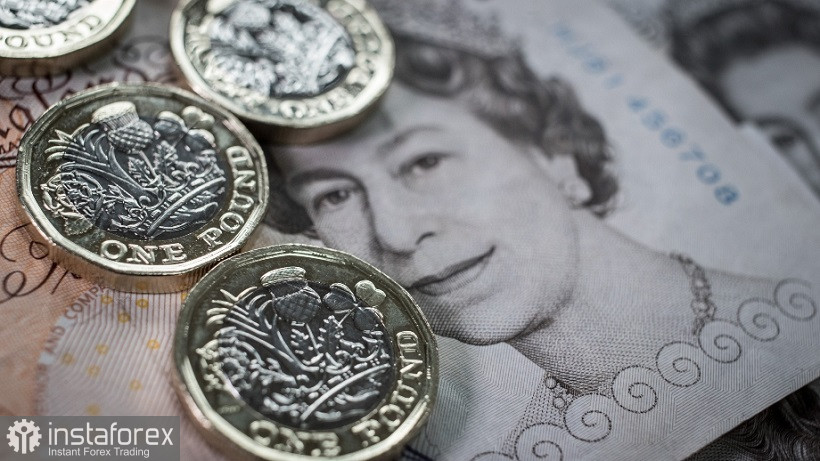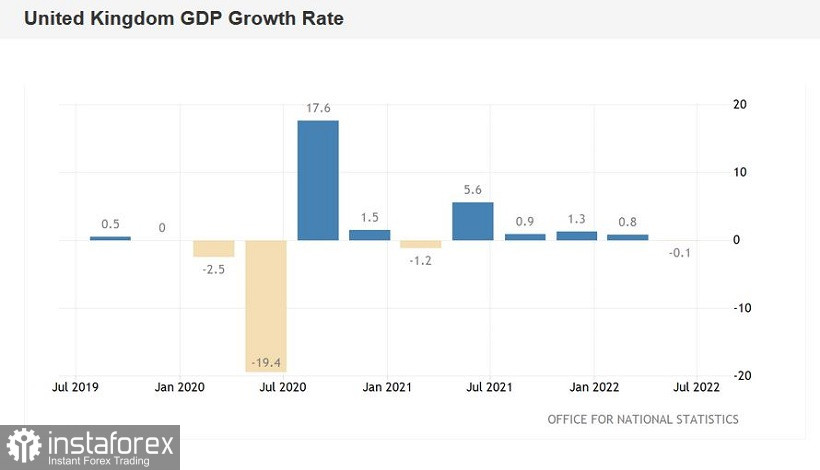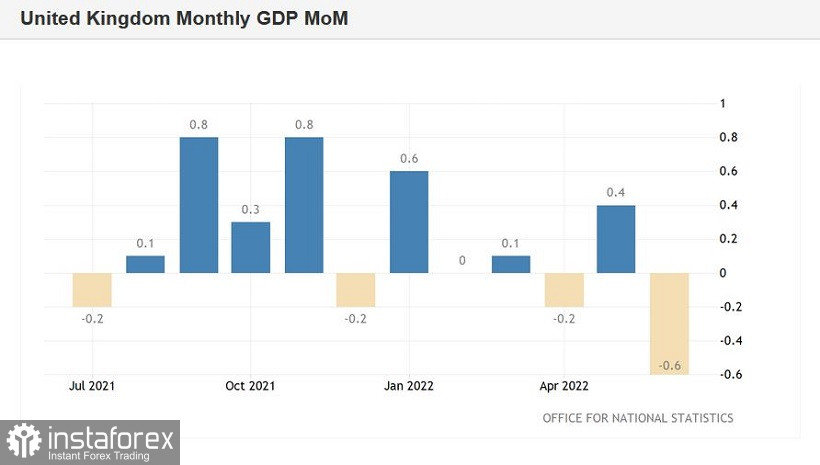The pound is steadily declining against the dollar, and not only due to the strengthening of the US currency. The British currency began to lose its positions last Thursday, ahead of the release of key data on the growth of the UK economy. On Friday, when, in fact, these data were published, the GBP/USD pair rushed down with renewed vigor, despite the fact that the macroeconomic report turned out to be in the green zone.

The pound still cannot find a foothold: during August, traders tried to gain a foothold within the 22nd figure twice and also failed twice. The vague outlook for monetary tightening does not allow GBP/USD bulls to feel confident. Although the Bank of England declares a hawkish rate, it voices restrained rhetoric, hinting at a slowdown in interest rate increases. Against this background, the support level of 1.2010 (Kijun-sen line on the daily chart) is still a reliable price stronghold - at least until the release of the inflation report, which we will discuss below.
In the meantime, let's get back to the indicators of the British economy. Last Friday, the UK published data on GDP growth. As mentioned above, the report came out in the green zone, but at the same time reflected a slowdown in key indicators. This is the first time this has happened since the pandemic. Amid unexpected growth of the British economy in the first quarter, the second quarter was closed in the red. And although the most pessimistic forecasts of experts did not come true, the main message of Friday's report is clear: the national economy is declining amid a rapid rise in inflation. This is bad news for the supporters of a strong pound, as the debate over the pace of monetary tightening has been going on for the past few months. Including in the camp of the English central bank. At the July meeting, three members of the Committee (Michael Sanders, Katherine Mann and Jonathan Haskell) voted in favor of a 50 point rate increase (the rest voted for a 25 point increase), while at the August meeting, one member of the Committee voted against a 50 point increase (Sylvana Tenreyro ), but her vote did not affect the overall decision.
In other words, the Monetary Policy Committee of the BoE is a priori not monolithic in determining the pace of rate hikes, so incoming macroeconomic data may tip the balance in one direction or another.
Thus, the volume of UK GDP in the second quarter increased by only 2.9%, while the growth forecast was 2.8% (for comparison, it can be noted that in the first quarter an increase of 8.7% was recorded). On a quarterly basis, the indicator completely went into the negative area, dropping to -0.1% (against the forecast of a decline to -0.2%). If we talk about monthly growth, then a sad picture also emerged: in June, the British economy contracted by 0.6% in monthly terms and by 0.1% in quarterly terms. However, this component was similarly in the green zone, as experts expected a more significant decline (-1.6% M/M and -0.2% Q/Q).
The index of industrial production growth also went into the negative area: it decreased by 0.9% in June (M/M) after rising by 1.3% in May. Negative dynamics was recorded in the processing industry: the volume of production decreased by 1.6%. Similarly, the indicators of the service sector and the indicators of the construction sector turned out to be in the red.
In general, the published figures reflected the slowdown in the British economy: the "green color" of the release, in my opinion, does not play any role in this case. Figuratively speaking, the depth of the fall turned out to be slightly less than the preliminary forecasts, but this fact does not negate the general negative trends.


After Friday's release, a logical question arose on the market: at what pace will the BoE tighten monetary policy this year? Slightly more than half (30 out of 55) of economists polled by Reuters are confident that the British central bank will decide on a 50-point rate hike in September. The rest of the interviewed experts are less resolute - in their opinion, at the next meeting the central bank will limit itself to a 25-point increase. Further, according to the forecasts of the vast majority of economists polled, the central bank will slow down the pace of rate hikes to 25 basis points anyway. At the same time, 25 experts (out of 55) believe that the BoE will pause in the process of tightening monetary policy in December.
Of course, the dynamics of the interest rate hike will largely depend on the growth dynamics of British inflation. If the members of the British central bank see the first signs of a slowdown in the main inflationary indicators, then the scale will definitely tilt towards a more moderate pace of tightening monetary policy. That is why all the attention of GBP/USD traders this week will be riveted to the release of data on the growth of the consumer price index in the UK (Wednesday, August 17). According to preliminary forecasts, the overall CPI in annual terms will again show growth - this time to 9.9%. The core index should also rise to 5.9%. Another inflationary indicator - the retail price index - can update another multi-year record, rising to 12%.
In my opinion, the inflation report will determine the GBP/USD movement vector in the medium term - it will either increase pressure on the pound, reducing the price to 1.1930 (the lower line of the Bollinger Bands indicator on the daily chart), or allow bulls of the pair to seize the initiative (if the release turns out to be in the green zone). In this case, we can expect a retest of the 22nd figure with a claim to conquer the resistance level of 1.2250 (the upper line of the Bollinger Bands, which coincides with the upper boundary of the Kumo cloud on the same timeframe). Given the high degree of uncertainty, at the moment it is advisable to take a wait-and-see position for the pair: following the results of the "test", which will take place this Wednesday, the pound will decide on the vector of its movement, including in pair with the dollar.
 English
English 
 Русский
Русский Bahasa Indonesia
Bahasa Indonesia Bahasa Malay
Bahasa Malay ไทย
ไทย Español
Español Deutsch
Deutsch Български
Български Français
Français Tiếng Việt
Tiếng Việt 中文
中文 বাংলা
বাংলা हिन्दी
हिन्दी Čeština
Čeština Українська
Українська Română
Română

